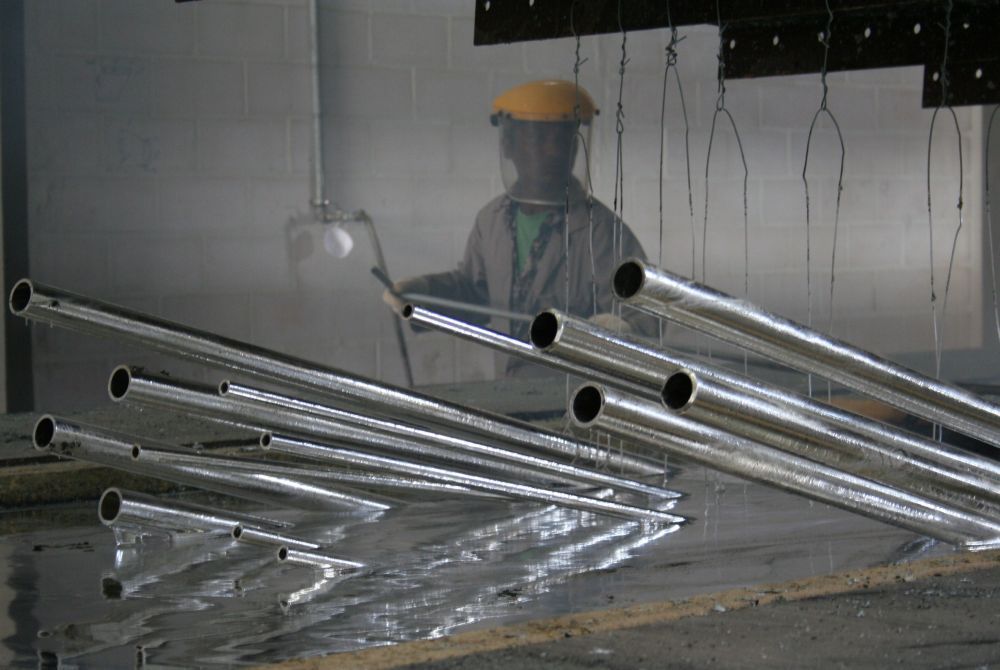
Tips and Tricks for Galvanizing Gates and Fence Panels
Hot dip galvanizing is one of the best ways to ensure that your mild steel fencing lasts. The process of dipping steel into a bath of molten zinc creates a thin but very durable layer of metal alloy on the surface of the steel, which can extend the lifespan of the fence or gate by years or decades.
However, while it’s relatively easy to galvanize simple metal components like fence posts, it’s a little more challenging to hot dip galvanize gates and fence panels. Let’s look at some tips and tricks to give you better results.
Why Do Gate and Fence Panels Warp During Hot Dip Galvanizing?
Sometimes, during the hot dip galvanizing process, gate and fence panels can warp. This means that they are no longer square, and they become slightly twisted.
Of course, since you need gate and fence panels to be straight and square, that’s a big problem!
One of the main reasons this happens is because different parts of the gate or fence panel cool at different rates. Since your gate or fence panel will have expanded during hot dip galvanizing, this difference in cooling rates causes differences in contraction, and that means your gate or panel could move out of square.
Don’t Forget to Drill Holes In Your Frame
One way to improve your gate and fence panel results after hot dip galvanizing is to ensure that there are holes drilled in your frames. This not only allows galvanizing to get inside your gate or panel frame, but if you have drilled holes above and below each picket or infill, it will also allow the galvanizing to go inside those components.
When you are drilling holes in your gate and fence panel frames, make sure they are large enough to allow the galvanizing to flow back out. When molten zinc is trapped inside a steel item, it releases gases that could cause the item to explode!
Try to Use the Same Type of Steel
It’s not always possible, but one of the best ways to ensure that your gate and fence panels come out of the galvanizing bath square and level is to choose the same type of steel.
We don’t mean you have to use all the same size steel for your gate or panel, but rather that you should choose the same type of components wherever possible. So if you use tubing for the gate frame, use tubular infills or pickets too, and if you use solid steel like angle iron, choose solid infills or pickets, and so on.
Choose Thicker Gauges
While we know that thicker gauges or wall thicknesses of steel members will increase the cost of a gate or fence panel (and it will cost more to galvanize them, too), but thicker steel is less likely to warp during the process.
Weld Gussets In Frame Corners
Another option to reduce the chance of warping during the galvanizing process of gates and fence panels is to weld gusset plates in frame corners if you can. Since these kinds of plates are attached on two sides, it makes it harder for those two components to twist, which can help to keep your gate or fence panel square and straight.
What Can You Do If Your Gate or Fence Panel Has Warped?
Unfortunately, if your gate or fence panel has warped, you probably don’t have any recourse as far as the company that galvanized the item goes.
This is a fairly common problem in the galvanizing world, and since hot dip galvanizers have no control over the design and manufacturing process of your items, they can’t be held responsible for any problems that arise.
In some cases, panels or gates that are slightly warped can be bent straight enough to be used, but if your item is very warped, you might need to remanufacture it and try again.
Always choose a reputable galvanizing company to get your gates and fence panels hot dip galvanized, and ask them for their recommendations for the best results.


